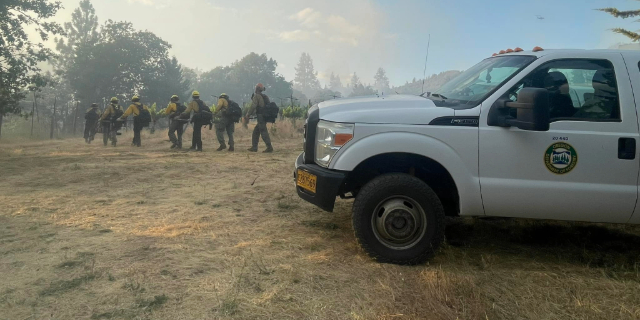Mount Ashland homeowner is saving butterflies by creating wildlife ‘land bridge’ at 5,500 feet
Published 12:32 pm Friday, June 20, 2025


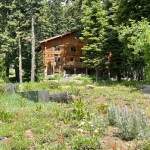
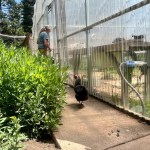
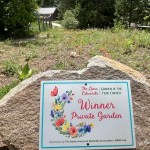
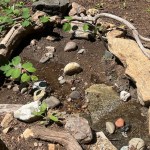
More than 60 species of butterflies have been documented on the property; ‘The garden just keeps getting better and better’
When hikers on the famous Pacific Crest Trail reach Mark Newberger’s land on Mount Ashland, they’re welcome to fill their water bottle from a well spout and kickback at a shaded picnic table.
Here, they also have a front-row seat of Newberger’s award-winning butterfly garden thriving at an elevation of 5,500 feet.
Monarch butterflies lay eggs on showy milkweed. Pale swallowtail, echo azure and Lorquin’s admirals are intentionally lured in by tower rockcress plants’ small creamy flowers, and California marble butterflies land on caterpillar host plants in the garden that is less than 5 miles upslope of California’s northern border.
Butterflies, bees and other beneficial pollinators play a critical role in ecosystems, economies and agriculture — 85% of all flowering plants depend on pollination for their survival — and yet the pollinator population is threatened by pesticides and habitat depletion.
Nature was helped here by Newberger, who transformed two, once-bare acres around his log house into a buzzing native plant garden for pollinators to feed on the flowers’ nectar and caterpillars, and use the leaves as shelters.
More than 60 species of butterflies have been documented on the property, prompting the editors of Butterfly Gardener, a publication for members of the North American Butterfly Association, in 2024 to deem it the Butterfly Garden of the Year.
Dianne Keller, who leads the association’s butterfly count in the vast and vital Siskiyou Crest that includes Newberger’s property, said his nature-scaping with native plants has strengthened the area’s wildlife connectivity that development usually interrupts.
Her report for the association refers to Newberger’s property as part of a high-elevation “land bridge” to the Pacific Ocean that allows wild creatures and rare plants to take refuge from the heat of the lowlands.
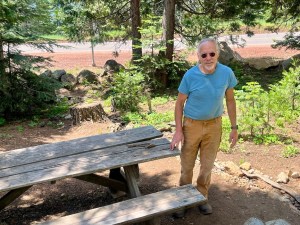
Mark Newberger at him property on Mount Ashland. Janet Eastman photo
Since purchasing the 40-acre property below the Mt. Ashland Ski Resort in 2014, Newberger has partnered with the Southern Oregon Land Conservancy to establish a land conservation easement protecting his existing montane white fir forest, montane chaparral and meadows.
Newberger, a naturalist certified through Oregon State University Extension Service, has added trails through his land and he hosts groups interested in the region’s diverse botanical, biological and geological features.
Nine years ago, Newberger asked botanist Suzie Savoie of Klamath-Siskiyou Native Seeds to create a pesticide-free butterfly garden.
Savoie harvested seeds from 60 specific species of native plants to grow in the garden. There are different types of lupines as well as native grasses and buckwheats.
On July 6, Savoie will guide people on a half-mile walk on the Pacific Crest Trail from Mount Ashland’s Grouse Gap picnic area to Newberger’s land to learn about wild landscapes and then see how wildcrafted seeds can duplicate the benefits at a home garden.
The walking workshop Wild Inspiration: Observing Nature for Native Plant Garden Design is organized by the nonprofit Pollinator Project Rogue Valley. A ticket is $20 at pollinatorprojectroguevalley.org.
Newberger said he didn’t compromise the look of an attractive landscape to aid pollinators. There’s a healthy canvas of red paintbrush, Oregon sunshine and purpleflower honeysuckle.
Mountain blue penstemons are near yellow arrowleaf mule’s ears and tall cream-colored beargrass.
“You don’t have to deprive yourself of awe and wonder, joy and beauty,” he said.
Newberger’s self-seeding native plants, which Savoie collected nearby to match the genetics of land at this elevation, don’t require irrigation or attention. But he’s always carefully watching for invasive weeds, stopping in mid sentence to pull a yellow salsify.
“Oh, boy, that’s not supposed to be here at all,” he said. “This area has the most diversity of species and a great ability to fight off invasive plants on its own, not that I haven’t done weeding here.”
Grants Pass photographer Rob Santry often shows up here on cool mornings. He uses patience and a Nikon camera to capture images of butterflies like a clodius parnassian sleeping on a bleeding heart herb, a hydaspe fritillary drinking nectar and a female golden hairstreak laying an egg on the underside of a golden chinquipin, a caterpillar host plant.
Newberger first saw Santry taking photos along the Mt. Ashland Ski Road and invited him onto the property.
Ashland photographer David Lee Myers, author of “Wings in the Light: Wild Butterflies in North America,” volunteers for the butterfly count and takes photos to document sightings here of lilac bordered copper, cedar hairstreak and other butterflies.
“Few things in my life have exceeded my expectations,” said Newberger, 72, “and this is one because the garden keeps getting better and better, and every year is so different.”
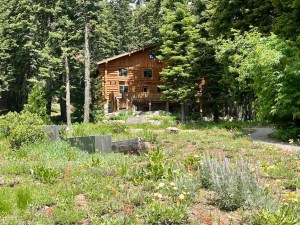
Mark Newberger’s log home on 2 acres on Mount Ashland. Janet Eastman photo
The land
Newberger’s land is a small but significant dot on the natural environment called the Siskiyou Crest, which links the volcanic Cascade and the coast ranges of Oregon and Northern California.
The nonprofit Siskiyou Crest Coalition describes the dramatically steep ridgelines, deep valleys and rivers that host ancient plants as “the axis for biodiversity on the West Coast.”
For millions of years, wildlife has moved across the skies, forests and watersheds of the ancestral homeland of the Takelma, Shasta and other Indigenous people, some members of the Confederated Tribes of Grand Ronde.
In the summer of 2019, Savoie and her partner Luke Ruediger, who wrote ”The Siskiyou Crest: Hikes, History & Ecology,” hiked nearly 200 miles through Siskiyou Crest wildlands.
They started on the western edge of the Cascade-Siskiyou National Monument above Ashland and ended 10 days later on the shores of the Pacific Ocean south of Crescent City, California.
The film of their trek, “Sagebrush to Sea: A Journey Across the Siskiyou Crest,” spotlights the land that inspires their work.
Pollinator garden tips
National Pollinator Week is June 16-22, but beneficial insects need help year round.
Ready to start inviting butterflies and other pollinators to a home garden?
Experts suggest growing a variety of native plants that provide year-round nectar and pollen to butterflies, moths, bees, wasps and hummingbirds. It’s best to have a range of flower colors, shapes and sizes. Larger plants can also provide shelter.
Start small. Purchase a few native plants that can thrive in your yard, based on its sunny, shady or wet location. The nonprofit Pollinator Project Rogue Valley has online resource information as well as an educational center, propagation nursery and demonstration garden in southern Oregon’s city of Phoenix.
Most important: Don’t use chemicals. Instead, enjoy the natural cycle of bugs that eat plants, and birds that eat bugs, says the group.
OSU Extension Service has a downloadable, 40-page guide to pollinator gardens, titled ”Enhancing Urban and Suburban Landscapes to Protect Pollinators,” and there is a list of 25 plants to draw native bees at OregonLive.com.
Experts at OSU Extension Service have found butterflies prefer:
- Red, orange, yellow and purple flowers.
- Flat flowers shaped like coreopsis.
- Small flowers in clusters such as milkweed, catmint and lupine.
Bees prefer:
- White, yellow, purple and blue flowers.
- Flat flowers shaped like berry bloom.
- Tiny flowers in clusters such as sedum, ninebark and milkweed.
The U.S. Fish and Wildlife Service suggests selecting a location that attracts the wanted pollinator.
- Butterflies and other pollinators like to bask in the sun and some of their favorite wildflowers grow best in full or partial sun with some protection from the wind.
- Know the soil type. Turn over a test patch to see if it’s sandy and well-drained or more clay-like and wet. The soil type and the amount of sunlight will help determine the kinds of plants that can grow there.
- Research which varieties of milkweed and wildflowers are native to the area and do well in your soil and sunlight conditions.
- Native plants are the ideal choice because they require less maintenance and tend to be hardier. Find a local nursery that specializes in native plants.
- It’s essential to choose plants that have not been treated with pesticides, insecticides or neonicotinoids.
- You’ll also want to focus on selecting perennials to ensure your plants come back each year and don’t require a lot of maintenance.









